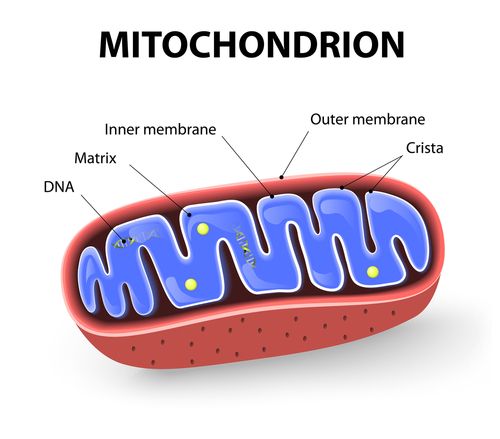Enzyme Triggers Parkin Protein to Quickly Clear Damaged Mitochondria, Study Finds

An enzyme called AMPK drives the clearance of damaged mitochondria, each cell’s energy source, by rapidly promoting the initial activation of the parkin protein — whose deficiency is linked to early onset, hereditary Parkinson’s disease, a study shows.
Parkin, which targets defective mitochondria for degradation, a process key to maintaining a cell’s health, was found to be activated within five minutes of mitochondrial damage, scientists report of their discovery of the first steps in cellular response to mitochondrial stress.
These findings may help in identifying new treatment targets and approaches for Parkinson’s disease.
AMPK, which stands for adenosine 5′-monophosphate-activated protein kinase, is a cellular stress-sensor enzyme known to be involved in cancer and type 2 diabetes. As such, “decoding this major step in the way cells dispose of defective mitochondria has implications for a number of diseases,” Reuben Shaw, PhD, the study’s senior author and the director of the Salk Cancer Center, said in an institute press release.
Study results also suggest that metformin, a type 2 diabetes medication known to activate AMPK and previously shown to suppress cancer, “may also help restore function in patients with neurodegenerative disease,” Shaw said.
“That’s because the general mechanisms that underpin the health of the cells in our bodies are way more integrated than anyone could have ever imagined,” he added.
The study, “AMPK/ULK1-mediated phosphorylation of Parkin ACT domain mediates an early step in mitophagy,” was published in the journal Science Advances.
Mutations in the PINK1 and PRKN genes are associated with early onset Parkinson’s, or disease onset before age 50, and their resulting proteins play key roles in mitochondria recycling — a process known as mitophagy.
The mitochondrial membrane-bound PINK1 protein prevents further mitochondria damage by adding a chemical tag, called a phosphate group, to a well-known region of the parkin protein at the mitochondria, activating it. This process of adding phosphate groups to proteins is called phosphorylation.
While “it has been well documented that Parkin [activation] initiates a series of biochemical events upon its translocation to mitochondria” following mitochondrial damage, the researchers wrote, the mechanisms behind this motion were unclear.
Shaw and his team discovered that mitophagy’s first steps involve a preliminary activation of parkin outside the mitochondria by ULK1, a protein activated by the stress-sensing enzyme AMPK.
Specifically, ULK1 was found to add a phosphate group to another region of parkin called the ACT element, which was previously shown to be critical for its full activation, but for reasons that, again, were not clear.
Further analysis, into the involvement of and interaction between these molecules over time, showed that the activation of AMPK, then ULK1, and finally parkin, all occurred within five minutes of mitochondrial damage.
PINK1 was found to add a phosphate group to parkin’s well-established activating region half an hour to one hour later, fully triggering its role in targeting for degradation any defective mitochondria.
These findings highlighted that ULK1-dependent parkin’s phosphorylation is “extremely rapid and evidently precedes all prior noted biochemical steps in the mitophagy cascade,” the researchers wrote.
They suggested that this event may serve as an “early alert signal” of mitochondrial damage, prompting parkin to first check out the mitochondria, in a surveillance role. If the damage is beyond repair, PINK1 then fully activates parkin to trigger destruction of those mitochondria, so healthy mitochondria can replace them.
Future studies are needed to further clarify the role of AMPK and UKL1 in parkin’s activation and its function in dopamine-producing neurons, the cells progressively lost in Parkinson’s disease, as well as in inflammation and in immune responses, the team noted.
Given AMPK’s role in sensing cellular stress and energy shortage, and in promoting protective responses to prolong cell survival, its activation is considered as a potential therapeutic approach for several conditions.
Metformin, an oral AMPK activator, is approved to treat type 2 diabetes, and has been shown to reduce the risk of both cancer and aging-related conditions. Therefore, it is currently being pursued as one of the first “anti-aging” therapies in clinical trials.
“The big takeaway for me is that metabolism and changes in the health of your mitochondria are critical in cancer, they’re critical in diabetes, and they’re critical in neurodegenerative diseases,” Shaw said.






